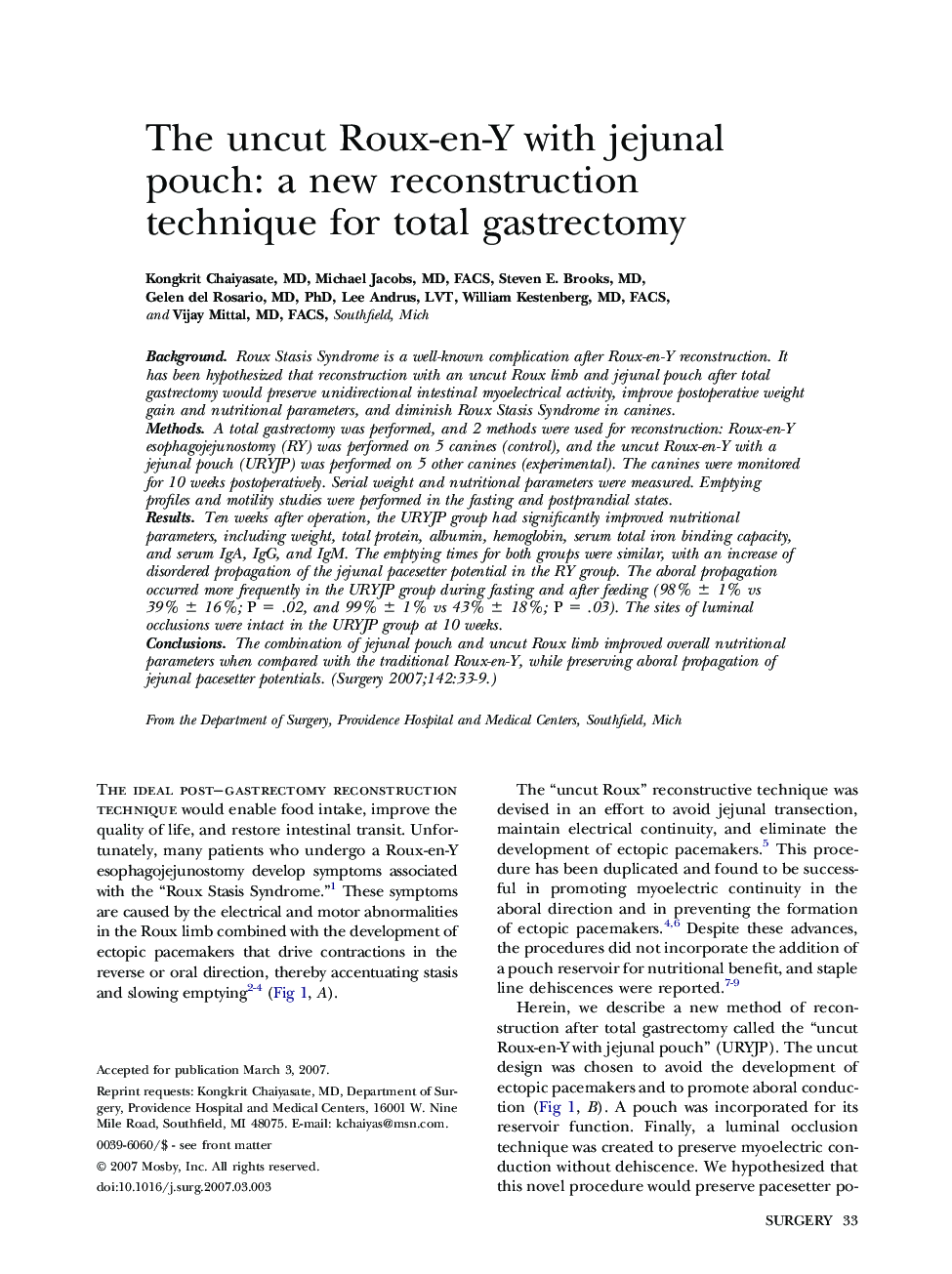| Article ID | Journal | Published Year | Pages | File Type |
|---|---|---|---|---|
| 4309940 | Surgery | 2007 | 7 Pages |
BackgroundRoux Stasis Syndrome is a well-known complication after Roux-en-Y reconstruction. It has been hypothesized that reconstruction with an uncut Roux limb and jejunal pouch after total gastrectomy would preserve unidirectional intestinal myoelectrical activity, improve postoperative weight gain and nutritional parameters, and diminish Roux Stasis Syndrome in canines.MethodsA total gastrectomy was performed, and 2 methods were used for reconstruction: Roux-en-Y esophagojejunostomy (RY) was performed on 5 canines (control), and the uncut Roux-en-Y with a jejunal pouch (URYJP) was performed on 5 other canines (experimental). The canines were monitored for 10 weeks postoperatively. Serial weight and nutritional parameters were measured. Emptying profiles and motility studies were performed in the fasting and postprandial states.ResultsTen weeks after operation, the URYJP group had significantly improved nutritional parameters, including weight, total protein, albumin, hemoglobin, serum total iron binding capacity, and serum IgA, IgG, and IgM. The emptying times for both groups were similar, with an increase of disordered propagation of the jejunal pacesetter potential in the RY group. The aboral propagation occurred more frequently in the URYJP group during fasting and after feeding (98% ± 1% vs 39% ± 16%; P = .02, and 99% ± 1% vs 43% ± 18%; P = .03). The sites of luminal occlusions were intact in the URYJP group at 10 weeks.ConclusionsThe combination of jejunal pouch and uncut Roux limb improved overall nutritional parameters when compared with the traditional Roux-en-Y, while preserving aboral propagation of jejunal pacesetter potentials.
